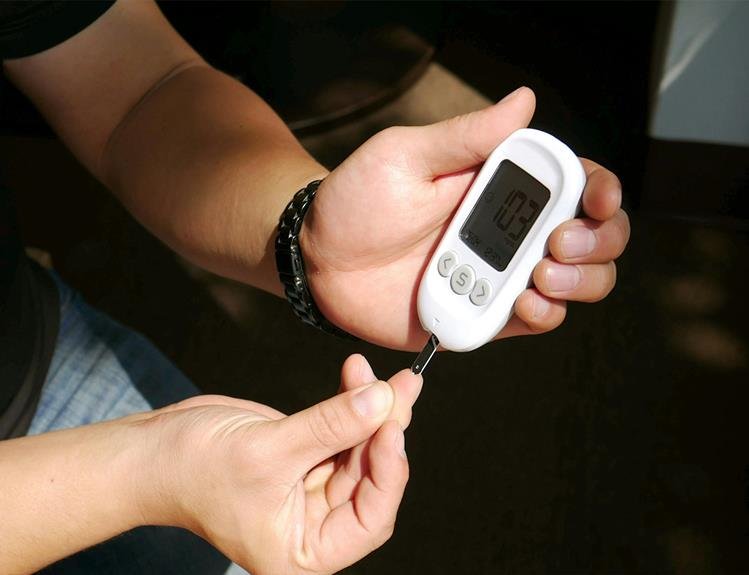Exploring the Different Types of Diabetes and Their Symptoms

Diabetes is a chronic disease that affects millions of people worldwide. It is a condition where the body is unable to properly regulate blood sugar levels, either due to insufficient production of insulin or an inability to use it effectively. There are three main types of diabetes: type 1, type 2, and gestational. Each type has its own distinct characteristics and symptoms, and it is important to understand the differences between them in order to properly manage and treat the disease. In this article, we will delve into the different types of diabetes and their symptoms, providing a comprehensive overview for those looking to educate themselves on this prevalent health condition. Whether you have recently been diagnosed with diabetes or simply want to gain a better understanding of the disease, this article aims to provide valuable insights into the varying types and symptoms of diabetes. By the end, readers will have a clearer understanding of this complex disease and be better equipped to make informed decisions about their health.
Understanding the types of diabetes.
It is essential to have a comprehensive understanding of the different types of diabetes to effectively manage and treat the condition. One of the most common forms is type 1 diabetes, which occurs when the immune system mistakenly attacks the insulin-producing cells in the pancreas. This results in little to no insulin production, requiring individuals with type 1 diabetes to take insulin injections or use an insulin pump to regulate their blood sugar levels. On the other hand, type 2 diabetes is characterized by insulin resistance, where the body does not utilize insulin effectively. Lifestyle factors such as obesity and physical inactivity contribute to the development of type 2 diabetes, making lifestyle modifications and medications necessary for management. Additionally, there is also gestational diabetes, which occurs in pregnant women and is characterized by high blood sugar levels. Understanding the distinctions between these types of diabetes is crucial in developing personalized treatment plans and promoting better overall health outcomes.for more articles on diabetes click here
Type 1: insulin deficiency disease.
Type 1 diabetes, also known as insulin deficiency disease, is a chronic condition that requires lifelong management. Unlike type 2 diabetes, which is often linked to lifestyle factors, type 1 diabetes is an autoimmune disease. This means that the immune system mistakenly attacks and destroys the insulin-producing cells in the pancreas, leading to little to no insulin production. As a result, individuals with type 1 diabetes require external insulin to regulate their blood sugar levels. This typically involves daily insulin injections or the use of insulin pumps. It is important for individuals with type 1 diabetes to closely monitor their blood sugar levels and make necessary adjustments to their insulin dosage to maintain optimal glucose control. Additionally, a well-balanced diet, regular exercise, and regular check-ups are crucial for managing type 1 diabetes effectively.
Type 2: insulin resistance disorder.
Type 2 diabetes, also known as insulin resistance disorder, is the most common form of diabetes. Unlike type 1 diabetes, which is an autoimmune condition, type 2 diabetes develops when the body’s cells become resistant to the effects of insulin. Insulin is a hormone produced by the pancreas that helps regulate blood sugar levels. In individuals with type 2 diabetes, the pancreas may initially produce enough insulin, but the body’s cells fail to utilize it effectively. This results in elevated blood sugar levels. Risk factors for type 2 diabetes include obesity, sedentary lifestyle, family history of diabetes, and certain ethnic backgrounds. Symptoms of type 2 diabetes may include increased thirst, frequent urination, unexplained weight loss, fatigue, and blurred vision. Managing type 2 diabetes typically involves lifestyle modifications such as adopting a healthy diet, engaging in regular physical activity, and, in some cases, medication or insulin therapy. Regular monitoring of blood sugar levels and routine check-ups with healthcare professionals are essential for effective management of type 2 diabetes.
Gestational diabetes during pregnancy.
Gestational diabetes is a specific type of diabetes that occurs during pregnancy. It is characterized by high blood sugar levels that develop during pregnancy in women who did not previously have diabetes. This condition occurs due to hormonal changes that can affect how the body processes insulin. Gestational diabetes can increase the risk of complications for both the mother and the baby if not properly managed. Women who are overweight, have a family history of diabetes, or have previously had gestational diabetes are at a higher risk of developing this condition. Monitoring blood sugar levels, following a balanced diet, engaging in regular physical activity, and, in some cases, taking medication are key components of managing gestational diabetes. It is important for pregnant women to work closely with their healthcare providers to ensure adequate monitoring and management of their blood sugar levels throughout their pregnancy.
Pre-diabetes and its warning signs.
Pre-diabetes is a condition that occurs when blood sugar levels are higher than normal but not yet high enough to be classified as type 2 diabetes. It serves as a warning sign that indicates individuals are at a higher risk of developing diabetes if preventive measures are not taken. While pre-diabetes often does not exhibit any noticeable symptoms, it is important to be aware of certain warning signs. These may include increased thirst, frequent urination, fatigue, blurred vision, and slow-healing wounds. Regular blood sugar testing is crucial for early detection and intervention. Lifestyle changes, such as adopting a healthy diet, engaging in regular physical activity, and maintaining a healthy weight, can help to prevent or delay the onset of type 2 diabetes in individuals with pre-diabetes. Consulting with a healthcare professional is essential for proper diagnosis and guidance on managing pre-diabetes effectively.
Knowing the common symptoms.
It is important to familiarize yourself with the common symptoms of diabetes, as early detection can greatly improve outcomes and prevent complications. One of the most prevalent symptoms is increased thirst, also known as polydipsia. This occurs as a result of high blood sugar levels, which lead to excessive fluid loss through urination. Frequent urination, or polyuria, is another common symptom of diabetes. This can occur as the body attempts to eliminate excess glucose through urine. Fatigue and lack of energy may also be experienced, as the cells are not able to adequately utilize glucose for energy production. Additionally, blurred vision, caused by changes in fluid levels in the eyes, may occur. It is important to note that these symptoms can vary depending on the type of diabetes and individual factors. If you experience any of these symptoms or have concerns, it is recommended to consult with a healthcare professional for proper evaluation and diagnosis.for more articles on diabetes click here
Managing diabetes for better health.
To effectively manage diabetes and promote better health, it is crucial to adopt a comprehensive approach that encompasses lifestyle modifications and medical interventions. Firstly, maintaining a balanced and nutritious diet is essential. Focus on consuming a variety of foods, including whole grains, lean proteins, fruits, and vegetables, while limiting the intake of sugary and processed foods. Regular physical activity is equally important, as it helps improve insulin sensitivity and control blood sugar levels. Engaging in exercises such as walking, swimming, or cycling for at least 150 minutes per week can have significant benefits. Additionally, it is imperative to closely monitor blood glucose levels and take prescribed medications as directed by healthcare professionals. Regular check-ups, eye examinations, and foot care can also help detect and manage any diabetes-related complications. By diligently following these steps and working closely with healthcare providers, individuals can effectively manage diabetes and enhance their overall well-being.
Seeking medical advice is crucial.
Seeking medical advice is crucial in effectively managing diabetes and ensuring optimal health outcomes. Healthcare professionals, such as doctors or endocrinologists, possess the knowledge and expertise to provide personalized guidance and treatment plans based on individual needs. They can conduct thorough assessments, monitor blood sugar levels, and determine the most appropriate medications or insulin regimens. Moreover, medical professionals can help address any potential complications or comorbidities associated with diabetes, such as cardiovascular problems or kidney issues. Regular consultations with healthcare providers not only aid in the management of diabetes but also provide an opportunity for education, support, and adjustments to treatment plans as required.
In conclusion, diabetes is a complex and serious medical condition that affects millions of people worldwide. Understanding the different types and their symptoms is crucial for proper diagnosis and management. Whether you or a loved one are at risk for developing diabetes or have already been diagnosed, it is important to work closely with a healthcare professional to create an individualized treatment plan. With proper education and management, it is possible to live a fulfilling and healthy life with diabetes. Remember to always prioritize your health and seek medical attention if you experience any concerning symptoms.
FAQ
What are the main differences between Type 1 and Type 2 diabetes in terms of their causes and symptoms?
Type 1 diabetes is an autoimmune condition where the body attacks insulin-producing cells, leading to little to no insulin production. It is often diagnosed in childhood and its cause is largely genetic. Symptoms include excessive thirst, frequent urination, weight loss, and fatigue. Type 2 diabetes is typically linked to lifestyle factors like diet and exercise, where the body becomes resistant to insulin. It is more commonly diagnosed in adults and can often be managed through lifestyle changes. Symptoms are similar to Type 1 but may develop more gradually. Management and treatment approaches differ between the two types.
What are the symptoms of gestational diabetes and how does it differ from other types of diabetes?
Gestational diabetes, a type of diabetes that occurs during pregnancy, presents symptoms such as increased thirst, frequent urination, fatigue, and blurred vision. It differs from other types of diabetes as it is usually temporary, developing during pregnancy and often resolves after childbirth. However, if left untreated, it can lead to complications for both the mother and baby. Managing gestational diabetes typically involves monitoring blood sugar levels, following a healthy diet, and sometimes insulin therapy.
Can you explain the symptoms of prediabetes and how it differs from full-blown diabetes?
Prediabetes typically shows no symptoms, but may include increased thirst, frequent urination, and fatigue. It differs from diabetes as blood sugar levels are higher than normal but not high enough for a diabetes diagnosis. Without intervention, prediabetes can progress to type 2 diabetes. Lifestyle changes such as diet and exercise can help manage prediabetes and prevent its progression to diabetes. Regular monitoring of blood sugar levels and consulting with a healthcare provider are crucial for early detection and management.
Are there any other less common types of diabetes besides Type 1, Type 2, and gestational diabetes, and what are their symptoms?
Yes, there are less common types of diabetes such as MODY (Maturity Onset Diabetes of the Young), LADA (Latent Autoimmune Diabetes in Adults), and secondary diabetes. Symptoms vary but can include increased thirst, frequent urination, unexplained weight loss, fatigue, blurred vision, and slow healing wounds. Testing and diagnosis by a healthcare professional are necessary for accurate identification and treatment.
How do the symptoms of diabetes insipidus compare to those of other types of diabetes?
Diabetes insipidus is not related to blood sugar levels like other types of diabetes. Instead, it is characterized by excessive thirst and urination due to the inability of the kidneys to conserve water. Unlike diabetes mellitus, which involves high blood sugar and insulin-related issues, diabetes insipidus is caused by a deficiency of antidiuretic hormone or kidney insensitivity to the hormone. Symptoms include dehydration, extreme thirst, and large amounts of dilute urine, but do not involve issues with blood sugar regulation.
Diabetes insipidus is distinct from other types of diabetes as it is not associated with blood sugar levels. Instead, it is characterized by excessive thirst and urination caused by kidney water conservation impairment. Unlike diabetes mellitus, which involves high blood sugar and insulin-related problems, diabetes insipidus is the result of antidiuretic hormone deficiency or kidney insensitivity to the hormone. Common symptoms include dehydration, intense thirst, and the production of large volumes of diluted urine, but it does not involve blood sugar regulation issues.




